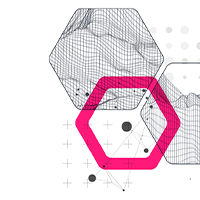Insider insights: Vittoria CEO Nicholas Siciliano on the future of CAR-T
Unlocking the full potential of CAR-T cell therapies remains one of the most exciting and actively pursued frontiers in cancer research today. While the emergence of these innovative therapies has generated immense interest, there is a pressing need to push beyond the hype to confront the very real challenges limiting their efficacy and accessibility, driving continuous innovation to enhance these potentially curative treatments.
In this exclusive interview, Deep Dive editor Eloise McLennan sat down (virtually) with Vittoria Biotherapeutics' CEO and co-founder, Nicholas Siciliano, to gain an insider's perspective on the state of the CAR-T field. Here, he shares his insights into the key challenges that must be addressed to propel this revolutionary modality forward into what he calls the “second inning” of CAR-T treatments.
Eloise McLennan:
How did you get into the field of cell therapy?
Nicholas Siciliano:
For the last 15 years or so, I've had a front-row seat to all the advances in cell and gene therapy and the technologies being translated at Penn [University of Pennsylvania, Philadelphia]. It's been really exciting.
I took a non-traditional path out of my doctoral degree. I co-founded a molecular diagnostic company in the greater Philadelphia area called Invisible Sentinel. It was with technology that I actually invented. We didn't spin it out of a university. Because of that, we had to take a “non-traditional” financing route. Long story short, [we] got it funded by a few high-net-worth individuals back in the 2008 market downturn, who thought it was less risky to invest in two first-time entrepreneurs than leave their money in the stock markets.
That was a great experience. It taught me a lot. It also plugged me into the network here in Philadelphia, of entrepreneurs and investors. On my travels, I met an individual by the name of Bruce Peacock – one of the premier life sciences executives, arguably in the country. He and I partnered about six or seven years ago on forming NewCos out of the greater Philadelphia ecosystem. It was through that endeavour that we came across the underlying technology for Vittoria.
Could you give us a brief overview of where we are at the moment in terms of CAR-T cell therapies?
We're in the second inning of what I believe is a game that's going to go well into extra innings. With the initial translational work done at Penn with what is now Kymriah, the excitement level was really high. Then again, it took some time to really dig in and understand, how can we apply this to other indications? How can we make it better for B-cell malignancies? Then there was a lot of early excitement around allogeneic therapies.
Unfortunately, some of the initial clinical results were not what everyone had aspired for. That's an interesting dynamic because I believe there's a place for both autologous and allogeneic therapies in the future of this modality. What I'm seeing now is this emergence of a third class that I like to term, “enabled autologous”.
You may never get the same type of curative potential from an allogeneic that you would with autologous, but again, with autologous, there are still many drawbacks with logistics, and challenges. I think enabled autologous is trying to bridge that gap.
What are the most significant challenges currently facing CAR-T cell therapies in terms of efficacy and patient outcomes?
One of the challenges with the first-generation products is that we see complete responses in 30% to 40% of the patients. It'd be great to double that number. Obviously, we'd aspire for 100%. Increasing effectiveness is always top of mind.
Some drivers around that current shortfall are: Do the CAR-Ts expand for every patient? How can we confer enhanced proliferative properties? One of the strongest correlates so far is that early expansion of the CAR-Ts in the patient is important to achieve a complete response.
The second is the durability of the CAR-Ts. Often, what you see are the partial responses and then the patients relapse. Often, that's due to the T-cells becoming exhausted. Anything we can do to make them more resistant to exhaustion and have them be active longer in the patient will be important to increase that. Then, on the other side, there's the manufacturing and logistics piece, but I'll pause there to see if there's anything more you want to talk about therapeutically.
The high relapse rate is a significant concern in CAR-T therapies. What are the primary factors contributing to this issue, and what advancements are being made to address it?
One of the challenges with targeting a pan antigen – whether it be CD19 for B-cells or BCMA – is antigen escape. One of the things that drives that escape in general with cancer is selective pressure and time. Therapies that do a better job clearing tumours sooner rather than later, such as getting more exhaustive clearance early on, will help prevent things like antigen escape.
There are unrealised checkpoint pathways. One that we work on at Vittoria is the CD5 signalling pathway, which can potentially unlock or harness the patient's natural immune response to the tumours.
That might even be a new approach that you see. We see some of that with engineered TIL [tumour-infiltrating lymphocyte] therapies now, but I think we can apply it to engineered T-cell therapies like CAR-T and TCR-T.
The high cost of CAR-T cell therapies is a significant barrier to widespread adoption. What steps are being taken within the industry to reduce these costs?
Some of that's going to come just generally with economies of scale as this becomes more of a common modality. The cost of the drug substances needed to make these products, the cost of the associated labour, all of that will benefit from some economy of scale. The big needle mover will be the automation of these processes, particularly autologous processes.
By trimming days off the ex vivo manufacturing process, you do a few things. One is you reduce the labour costs, you reduce the time required in a GMP clean room facility. But interestingly, shorter manufacturing times for autologous cell therapies also confer a functional benefit to the resulting drug product. It actually makes the drug product more potent.
The less time a patient's cells spend outside of their body and in an artificial and external environment, the less exhausted they become and the better they do. By shortening the ex vivo manufacturing processes, you can also significantly lower the required dose in many cases – this is the case of Vittoria – because the expansion winds up happening in the patient, rather than in the manufacturing process. That's also important.
Beyond blood cancers, what new applications of CAR-T therapies are currently being explored by researchers and developers?
Some of the hottest indications or applications being talked about now are in immunology. Really exciting work is ongoing with lupus patients and other immunology applications, Graves' disease, for example, where B-cells are mediating the pathogenic effect.
At Vittoria, again, we've also taken an eye to that. Our second programme right now has a huge potential application in lupus. It also addresses one of the inherent safety issues with all of the first-generation B-cell-targeted CAR-Ts, in that it would specifically target the pathogenic B-cells and spare healthy B-cells in immunology applications.
In oncology, it would specifically target the malignant cells and spare the patient's healthy B-cells. That, I think, is a really interesting dynamic and one of the, again, areas where we'll start to see improvement in the space – call it on-target, off-tumour issues.
What are the key regulatory challenges facing CAR-T therapies? How can industry work with regulators to try and overcome them without impacting what patients are able to receive?
You know what? I’d like to take this opportunity to pay a compliment to the FDA. They’ve made a significant effort to be thoughtful about some of these newer game-changing modalities like cell and gene therapy and build into what has been historically a very rigid infrastructure.
Now, the reality is, as a drug developer and just drug developers in general, the agency will never move fast enough because we want to be able to advance these technologies at lightning speed. But, over the last couple of years, I’ve seen a real effort to try to create pathways for accelerated approvals. One of the big challenges you have in this space, just again inherently, is that the technology is advancing so quickly that it becomes dynamic to manage the regulations.
We all take a lot of responsibility playing in this space right now because it’s going to be up to us to, one, get it right and, two, avoid major pitfalls that would, again, push the agency to become more restrictive.
You’ve called this era of cell therapy the “second inning”, what innovations or research initiatives are addressing current limitations to push us into the third inning?
One of the inherent challenges is that there are just so many targets. There’s an opportunity to get much more, I’ll call it, 'surgical' with antigenic targets. I think you’re seeing some of that with the TCR-T therapies, too, looking at epitopes in the context of MHC receptors.
There’s also this concept of cell therapy unlocking the patient’s naturally occurring anti-tumour T-cells and immune cells to create additional effector populations of cells in the patient. That’s something that we’re working on at Vittoria that we’re really excited about. That could be a real game-changer.
Finally, what excites you most about the future of CAR-T therapies, and what potential advancements or breakthroughs do you foresee in the next few years?
I think in the next couple of years, we’re going to see this modality solve for some of the “holy grails” in the space, such as solid tumour treatments and metastatic tumours.
I think we are moving in the right direction to start to make some progress there. Again, some of that comes with armouring technologies or the work we do at Vittoria with our SENZA5 platform to be able to overcome resistance and immunosuppression.
Breaking into the solid tumour paradigm – that’s probably the next big near-term milestone to fall.
About the author
Eloise McLennan is the editor for pharmaphorum’s Deep Dive magazine. She has been a journalist and editor in the healthcare field for more than five years and has worked at several leading publications in the UK.
Supercharge your pharma insights: Sign up to pharmaphorum's newsletter for daily updates, weekly roundups, and in-depth analysis across all industry sectors.
Want to go deeper?
Continue your journey with these related reads from across pharmaphorum
Click on either of the images below for more articles from this edition of Deep Dive: Oncology 2024






















